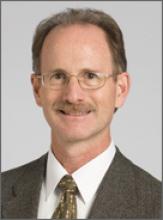Last month in our practice we had a patient with a positive HIV enzyme-linked immunoassay (ELISA) test and a negative Western blot. The patient’s doctor was astute, elicited a history of a recent viral-like syndrome, and considered the possibility of recent HIV infection, which further testing confirmed as the correct diagnosis.
It has been fascinating to watch the discovery of HIV/acquired immunodeficiency syndrome (AIDS) and the evolution of diagnosis and treatment since the inception of the epidemic in 1981. In 1981, I was practicing in a small town in Michigan’s Upper Peninsula, and I did not see a patient with HIV infection in my office until 1990. In 2014, with an estimated prevalence of 1.1 million HIV cases in the United States,1 family physicians are likely to come into contact with several patients with HIV every year. Practicing on Chicago’s south side in 2008, I diagnosed 2 teenagers with HIV. It was a heartbreaking reality.
The discovery of highly active antiretroviral therapy (HAART) has transformed HIV/AIDS from an acute, infectious specialty disease to a chronic primary care disease. Although the annual incidence of HIV in the United States has dropped precipitously from its peak of 130,000 in the 1980s to about 50,000 in 2010,1 the prevalence continues to rise as more people with HIV infection are living for many years. People with HIV who receive proper care do have a shortened life span, but not by many years, and they are highly likely to show up in our offices for treatment of not only chronic illnesses that accompany HIV but also common diseases such as hypertension, diabetes, and coronary artery disease. More and more patients with HIV are being managed in primary care settings, with infectious disease specialists acting as consultants.
Universal screening for HIV is recommended and becoming the norm, and the stigma for testing appears to be decreasing. The burdensome informed consent process has been streamlined in many states, making screening seem routine to patients. Family physicians must do their part to help control the HIV epidemic by screening, properly diagnosing new cases of HIV, and providing chronic disease and preventive care. To that end, I encourage you to read “HIV screening: How we can do better,” by Editorial Board member Jeffrey T. Kirchner, DO, FAAFP, AAHIVS.


